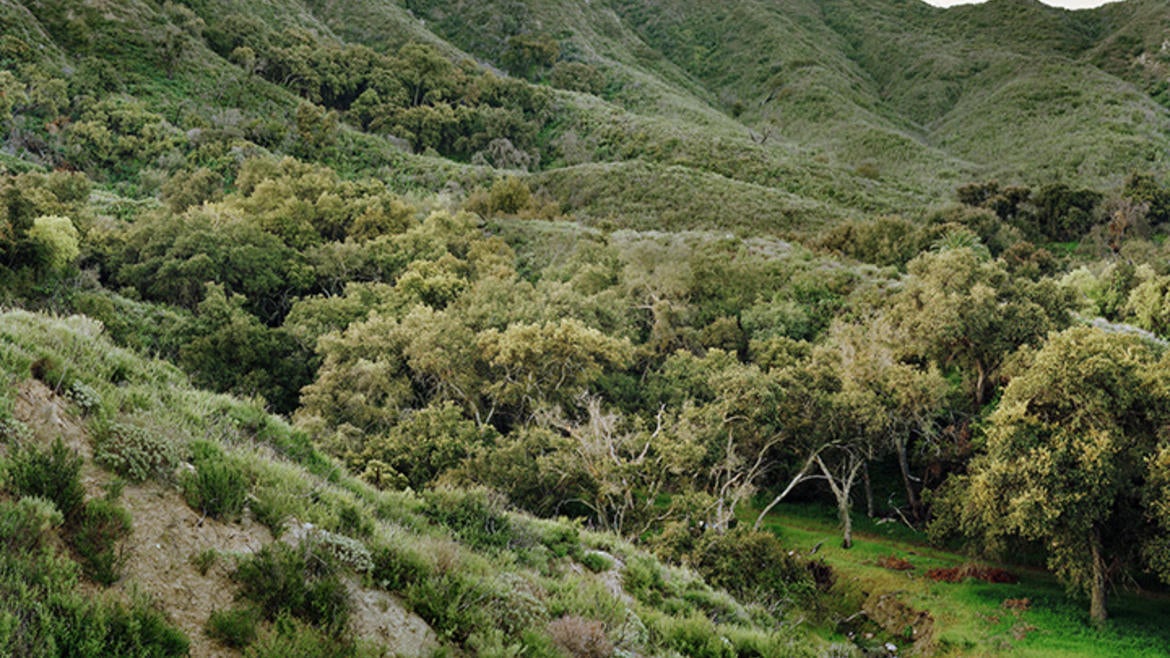
Emerson Oaks Reserve, located in the Temecula Valley, lies in a transitional zone between the California coast and the Colorado Desert. Four major climatic zones—mountain, desert, coastal, and interior valley—converge on site, helping to influence a variety of habitats.
This reserve provides excellent opportunities to study the management of oak woodlands, a habitat that is in decline throughout California. Oak woodlands and coastal sage scrub habitats are found on the reserve’s lower and gentler slopes. Higher, more rugged elevations support oak trees and dense stands of chaparral.
These diverse habitats and several permanent springs help support a wide variety of wildlife. Observed fauna include mule deer, kangaroo rats, hawks (Cooper’s, red-tailed, and red-shouldered), American kestrel, western scrub jays, wrentits, Hutton’s vireo, California thrashers, rattlesnakes (red diamond and southern Pacific), orange-throated whiptail, coast horned lizard, and a variety of butterflies, including the California sister and Lorquin’s admiral.
The reserve, which is protected by The Nature Conservancy (TNC), is bordered by the Pechanga Indian Reservation, Agua Tibia Wilderness, Dorland Mountain Artists’ Retreat, agricultural land, scattered residences, and lands held by the U.S. Bureau of Land Management.
Selected Research
- Inventories of the site’s vertebrates, plants, and fungi are in progress.
- A variety of research involving mycorrhizal fungi related to live oaks.
Special Programs
Habitat restoration, including removal of non-native species in the lower canyon.
Field Courses
The site is visited by university courses in vertebrate field biology and mycology.
Contact Information
Kenneth J. Halama
Department of EEOB
Spieth Hall University of California
Riverside, CA 92521
Phone: 951-657-3111
kjhalama@ucr.edu
Emerson Oaks Reserve website
Location
Riverside County, 8 km (5 mi.) southeast of Temecula; 73 km (45 mi.) south of the city of Riverside; 50-min drive south of the Riverside campus; adjacent to Agua Tibia Wilderness.
Facilities
Small laboratory building. Best suited for day use.
Reserve bibliography
The reserve bibliography includes citations of journal articles, books, theses, art, and other works published about or based on activities conducted at the reserve.
Databases
Beginning inventory of fungi, vertebrates, and plants
Plant List
Personnel
Reserve director, on-site caretaker
Size
98 hectares (241 acres)
Elevation
439 – 640 m (1,440 – 2,100 ft.)
Average Precipitation
28.5 cm (11.2 in.) per year
Average Temperatures
July – August maximum: 37.8 ºC (100 ºF)
December minimum: 1.1 ºC (34 ºF)
